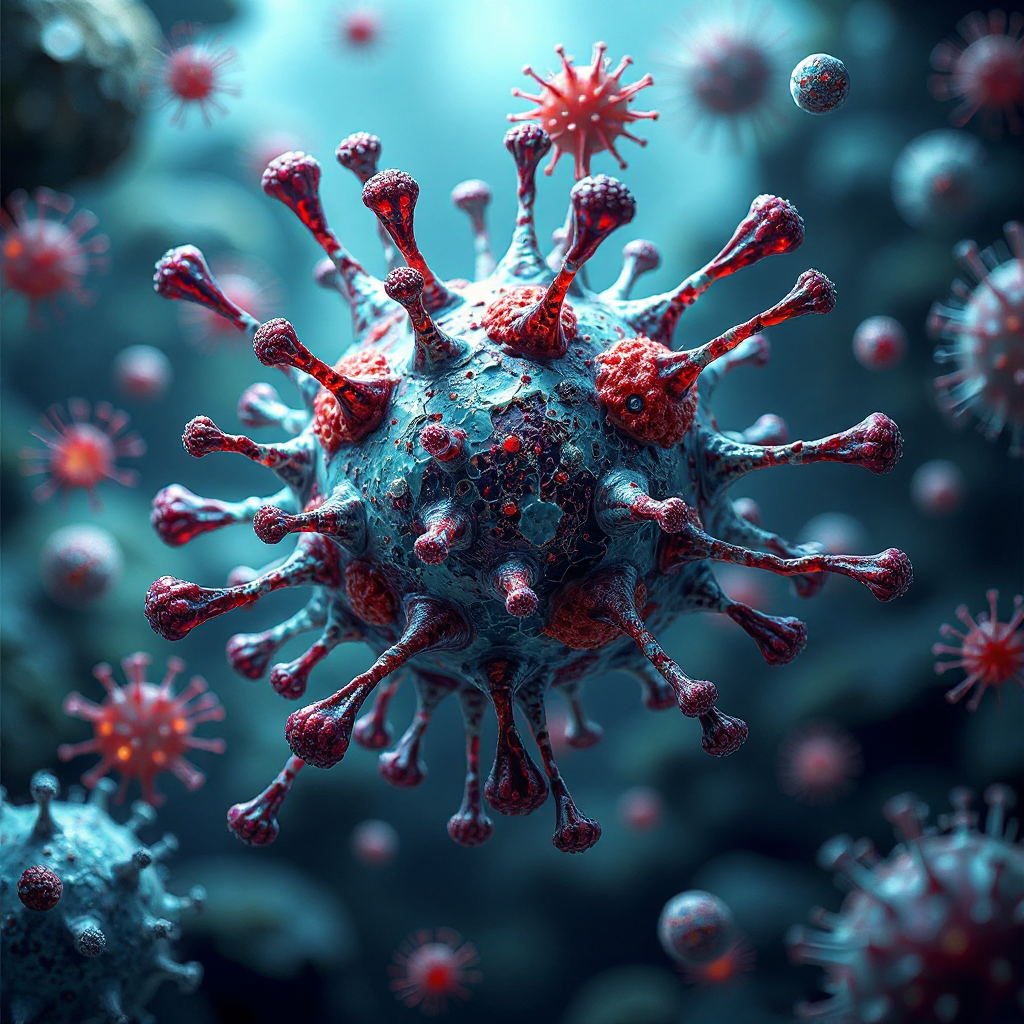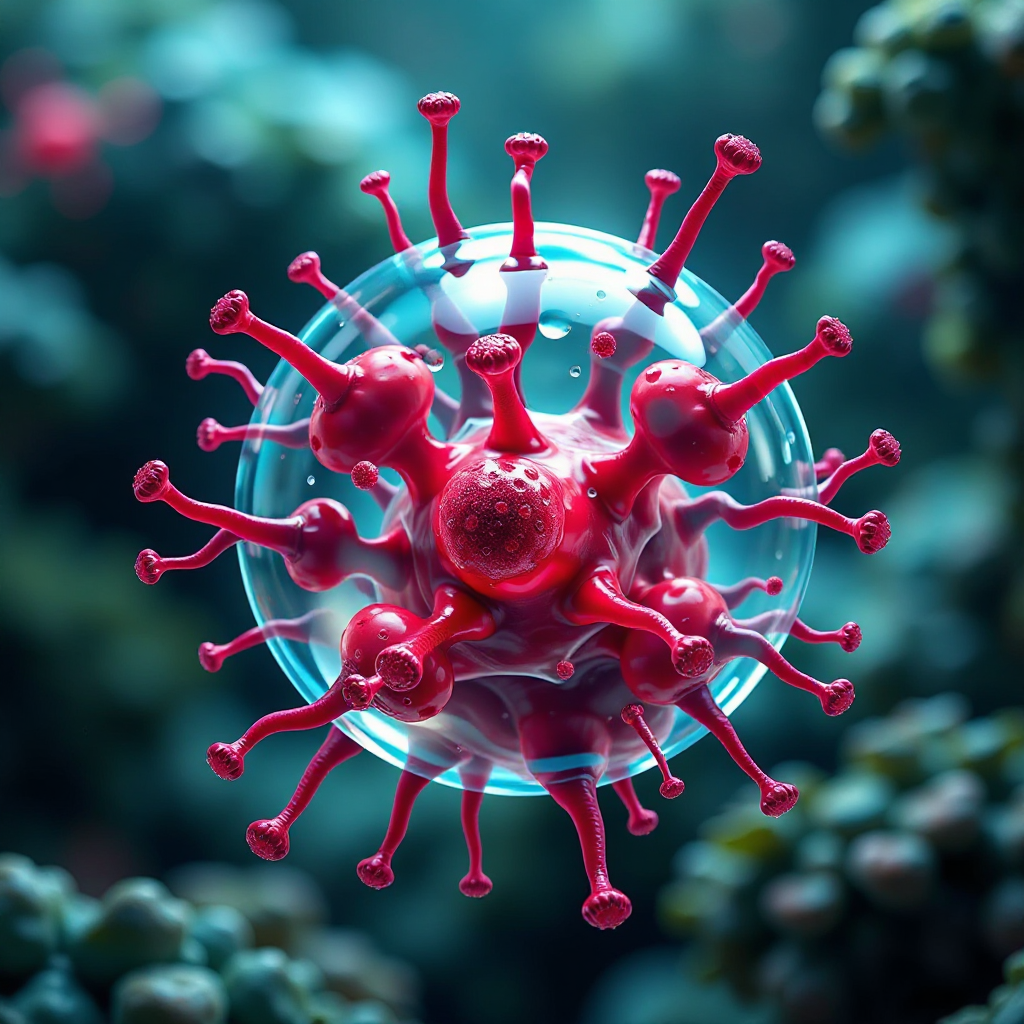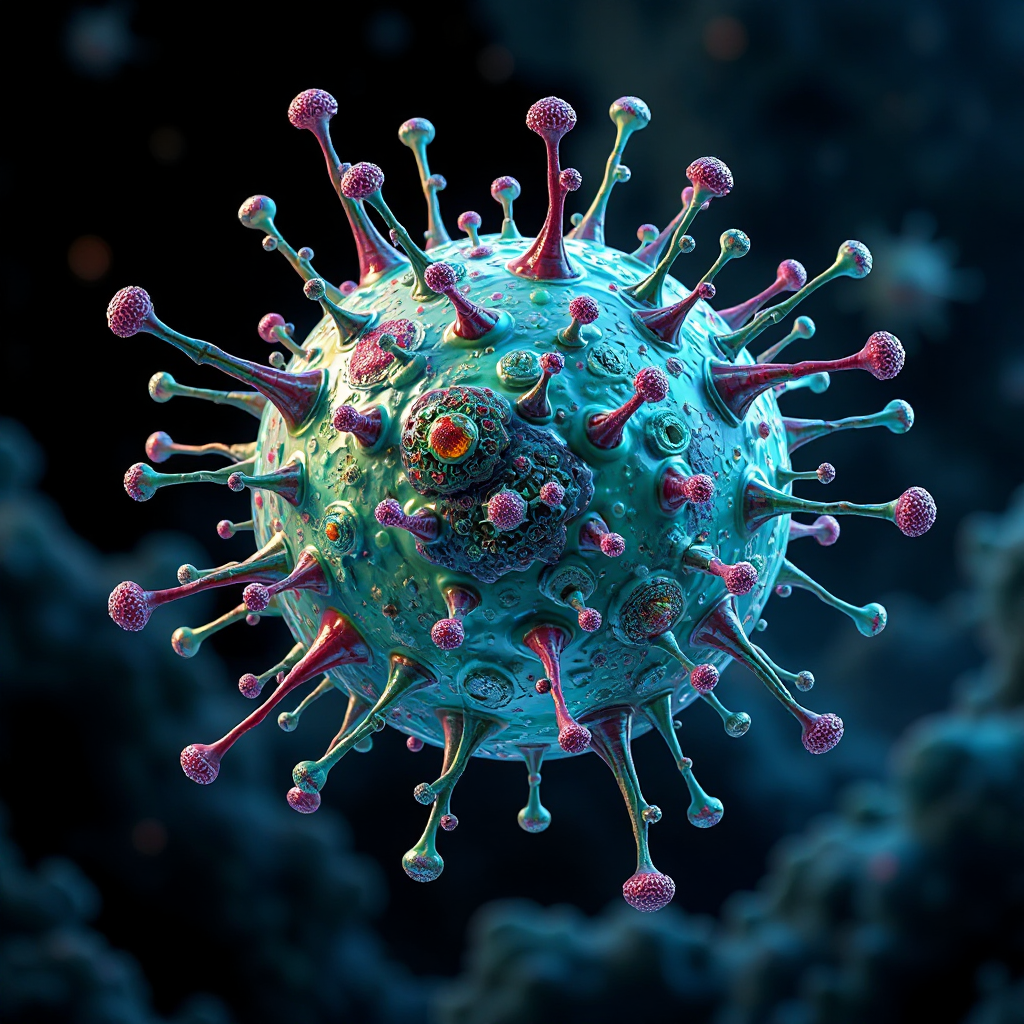Sézary Syndrome-What Are the Symptoms and Treatments

Sézary syndrome is a rare and aggressive form of cutaneous T-cell lymphoma. It affects your skin, blood, and lymph nodes, causing widespread symptoms that disrupt daily life. This condition impacts only 0.1 per million people globally, making it one of the rarest types of cutaneous T-cell lymphomas. In comparison, other forms of this cancer affect about 10 per million individuals.
The exact cause of Sézary syndrome remains unknown. However, researchers have identified chromosomal abnormalities in the cancerous cells of affected individuals. These changes, such as deletions or duplications on specific chromosomes, occur spontaneously during a person’s life rather than being inherited.
Recognizing symptoms like severe itching, skin changes, and enlarged lymph nodes early can help you seek timely medical care.
Key Takeaways
Sézary syndrome is a rare cancer that affects the skin, blood, and lymph nodes. Finding symptoms early can help with better treatments.
Common signs are bad itching, red scaly skin, and swollen lymph nodes. These can make life hard and need a doctor’s checkup.
Doctors use physical exams, blood tests for strange T-cells, and skin samples to diagnose it. Early diagnosis helps with better treatment.
Treatments include light therapy, immune system therapy, and stem cell transplants. These can ease symptoms and make life better.
Learning more and getting help can make emotional struggles easier. Talking to counselors or joining support groups can really help.
Symptoms of Sézary Syndrome

Skin Symptoms
Red, scaly patches or plaques covering large areas of the body
You may notice red, scaly patches or plaques that cover significant portions of your skin. These patches often feel rough and may appear inflamed. Unlike common skin conditions like eczema or psoriasis, Sézary syndrome causes a widespread rash known as erythroderma, which can cover up to 80% of your body. This rash often comes with severe itching and skin swelling, making it difficult to manage daily activities.
Painful, itchy rash that disrupts daily life
The rash caused by Sézary syndrome is not just itchy—it can become painful and unbearable. This intense itching, medically referred to as pruritus, can interfere with your sleep and overall quality of life. The discomfort often leads to scratching, which may worsen the condition and increase the risk of skin infections.
Thickened or leathery skin texture
Over time, your skin may develop a thickened or leathery texture. This change, known as lichenification, occurs due to chronic inflammation and scratching. It can make your skin feel tight and uncomfortable, further complicating your symptoms.
Systemic Symptoms
Enlarged lymph nodes (lymphadenopathy)
You might experience swelling in your lymph nodes, particularly in areas like your neck, armpits, or groin. This swelling, called lymphadenopathy, occurs because Sézary syndrome affects your lymphatic system. Enlarged lymph nodes can feel tender and may signal the spread of the disease.
Fatigue, general malaise, and weight loss
Sézary syndrome often causes systemic symptoms like fatigue and a general feeling of unwellness. You may also notice unexplained weight loss, which can result from the body’s immune response to the disease. These symptoms can significantly impact your energy levels and daily functioning.
Changes in nails, hair, and eyelids
You might observe changes in your nails, such as thickening or discoloration. Hair loss, particularly in affected areas, is another common symptom. Additionally, your eyelids may become inflamed or irritated, adding to the discomfort caused by the disease.
Blood-Related Symptoms
Presence of Sézary cells (abnormal T-cells) in the blood
Sézary syndrome is unique among cutaneous T-cell lymphomas because it involves the presence of Sézary cells in your bloodstream. These abnormal T-cells can be detected through blood tests and are a key diagnostic feature of the disease. Their presence differentiates Sézary syndrome from other subtypes of cutaneous T-cell lymphoma.
Anemia or other blood abnormalities
You may develop anemia, a condition where your blood lacks enough healthy red blood cells. This can lead to symptoms like fatigue, weakness, and pale skin. Other blood abnormalities, such as low platelet counts, may also occur, further complicating your condition.
Diagnosis of Sézary Syndrome
Accurate diagnosis of Sézary syndrome involves multiple steps to confirm the presence of this rare condition. Doctors use a combination of physical examinations, blood tests, and biopsies to identify the disease and rule out other skin disorders.
Physical Examination
Your doctor will start by examining your skin for changes such as redness, scaling, or thickened patches. They will also check for swollen lymph nodes in areas like your neck, armpits, or groin. These physical signs, combined with a review of your medical history, help identify patterns consistent with Sézary syndrome.
Key diagnostic methods during a physical examination include:
Assessing skin changes and lymph node enlargement.
Reviewing your medical history for symptoms like itching or fatigue.
Conducting imaging tests, such as CT or PET scans, to evaluate cancer spread.
Blood Tests
Blood tests play a crucial role in diagnosing Sézary syndrome. Your doctor will look for Sézary cells, which are abnormal T-cells found in the bloodstream. Flow cytometry, a specialized test, enhances the accuracy of detecting these cells. Research shows that using PD-1 markers improves detection rates, especially when traditional methods fall short.
Other blood tests, like a complete blood count (CBC), help identify abnormalities such as anemia or low platelet counts. These findings provide additional clues about the disease's impact on your body.
Skin Biopsy
A skin biopsy is often necessary to confirm the diagnosis. During this procedure, your doctor will remove a small sample of skin tissue for microscopic examination. This test reveals the presence of lymphoma cells, distinguishing Sézary syndrome from other skin conditions like eczema or psoriasis.
Biopsies may also be performed on lymph nodes or bone marrow if doctors suspect the disease has spread. These tests provide a clearer picture of the disease's progression and help guide treatment decisions.
Imaging Tests
CT scans or PET scans to evaluate internal lymph node involvement
Imaging tests play a crucial role in understanding how far Sézary syndrome has progressed. These tests help your doctor determine if the disease has spread to your internal lymph nodes or other parts of your body. Among the most commonly used imaging techniques are CT (computed tomography) scans and PET (positron emission tomography) scans.
CT scans create detailed cross-sectional images of your body. These images allow your doctor to examine the size and structure of your lymph nodes. Enlarged lymph nodes often indicate that the disease has spread beyond the skin. PET scans, on the other hand, use a small amount of radioactive material to highlight areas of increased metabolic activity. Cancer cells, including those affected by Sézary syndrome, typically show higher activity levels, making PET scans an effective tool for identifying affected lymph nodes.
Why are imaging tests important?
They provide a clearer picture of the disease's extent, helping your doctor develop a more targeted treatment plan.
Here are some key benefits of using CT and PET scans for Sézary syndrome:
They help identify whether cancer has spread to internal lymph nodes.
They provide detailed images that guide treatment decisions.
Your doctor may recommend these tests if you have symptoms like swollen lymph nodes or unexplained weight loss. By evaluating the results, they can assess the severity of your condition and monitor how well treatments are working. These imaging techniques are non-invasive, making them a safe and reliable option for managing Sézary syndrome.
Treatment Options for Sézary Syndrome

Topical and Skin-Directed Therapies
Phototherapy (light therapy) to reduce skin symptoms
Phototherapy, also known as light therapy, can help manage the skin symptoms of Sézary syndrome. This treatment uses ultraviolet (UV) light to target affected areas. It reduces inflammation and slows the growth of abnormal T-cells in your skin. Phototherapy is often recommended for patients with widespread skin involvement. It is a non-invasive option that can improve your skin's appearance and reduce itching.
Topical corticosteroids or retinoids for localized treatment
Topical treatments like corticosteroids or retinoids are effective for managing localized symptoms. Corticosteroids reduce inflammation and itching, while retinoids help normalize skin cell growth. These treatments are applied directly to the skin, making them a convenient option for addressing specific areas of concern.
Systemic Therapies
Immunotherapy, including monoclonal antibodies
Immunotherapy boosts your immune system to fight cancer cells. Monoclonal antibodies, a type of immunotherapy, target specific proteins on cancer cells. This approach helps your body recognize and destroy these cells more effectively. Immunotherapy is often used when the disease has spread beyond the skin.
Chemotherapy for advanced or resistant cases
Chemotherapy may be necessary if your condition becomes advanced or resistant to other treatments. This therapy uses drugs to kill rapidly dividing cells, including cancerous ones. While chemotherapy can be effective, it may also cause side effects like fatigue and nausea.
Histone deacetylase (HDAC) inhibitors, such as vorinostat and romidepsin
HDAC inhibitors, like vorinostat and romidepsin, are newer treatments for Sézary syndrome. These drugs work by altering the way cancer cells grow and divide. They are particularly useful for patients who do not respond to traditional therapies.
Advanced Treatments
Stem cell transplantation for eligible patients
Stem cell transplantation offers a potential long-term solution for eligible patients. This procedure involves replacing diseased bone marrow with healthy stem cells. Eligibility depends on factors like age, donor matching, and medical evaluations.
Criteria | Details |
|---|---|
Age | Between 18 and 70 years |
Donor Matching | Matched family donor aged 18 or older |
Medical Evaluations | Specific evaluations required for eligibility |
Extracorporeal photopheresis (ECP), a blood-filtering treatment
Extracorporeal photopheresis (ECP) is a specialized treatment that removes blood from your body, treats it with light-reactive drugs and UVA light, and then reinfuses it. This process helps destroy cancer cells and can contribute to long-term disease control. ECP isolates white blood cells and exposes them to specific drugs and UVA irradiation, enhancing its therapeutic effects.
Participation in clinical trials for experimental therapies
The treatment of Sézary syndrome is continuously evolving. Numerous clinical trials are underway to explore newer and better therapies. Discussing clinical trial options with your healthcare provider can help you access cutting-edge treatments.
Tip: Clinical trials offer hope for patients seeking innovative solutions. Always consult your doctor to determine if you qualify.
Supportive Care
Managing symptoms like itching, infections, and fatigue
Managing symptoms effectively can improve your quality of life with Sézary syndrome. Severe itching, or pruritus, is one of the most challenging symptoms. You can try several strategies to reduce discomfort:
Practice good skin care by taking lukewarm showers and applying fragrance-free moisturizers.
Use ointments like petroleum jelly or lotions containing menthol to soothe your skin.
Take sedative antihistamines at night to help you sleep better.
Consider medications like gabapentin, which blocks itch-related neurotransmitters, or antidepressants such as doxepin and mirtazapine for their anti-itch properties.
Ask your doctor about aprepitant, a medication shown to reduce itching in Sézary syndrome.
Explore phototherapy options like PUVA or narrow-band UVB, which can significantly improve itching.
Infections are another concern. Keeping your skin clean and hydrated can prevent bacterial or fungal infections. If you notice signs of infection, such as redness or swelling, consult your doctor immediately. Fatigue, a common systemic symptom, may improve with a balanced diet, regular light exercise, and adequate rest.
Tip: Staying hydrated and maintaining a consistent skincare routine can help manage itching and prevent infections.
Psychological support and counseling for patients and families
Living with Sézary syndrome can take an emotional toll on you and your loved ones. Feelings of anxiety, depression, or isolation are common. Seeking psychological support can help you cope with these challenges. Counseling sessions provide a safe space to express your emotions and develop coping strategies.
Family members may also benefit from counseling. It helps them understand your condition and learn how to support you better. Support groups, either in-person or online, connect you with others facing similar challenges. Sharing experiences can reduce feelings of isolation and foster a sense of community.
Note: Open communication with your healthcare team ensures you receive the emotional and psychological support you need.
Prognosis of Sézary Syndrome
Disease Progression
Chronic and relapsing nature of the disease
Sézary syndrome often follows a chronic and relapsing course. You may experience periods of improvement followed by flare-ups. This pattern can make managing the disease challenging. The condition primarily affects your skin but can also involve your blood and lymphatic system. Over time, the disease may become more aggressive, requiring advanced treatments to control its progression.
Potential for systemic spread and complications
If left untreated, Sézary syndrome can spread beyond your skin. It may affect your lymph nodes and vital organs like the spleen or liver. This systemic spread can lead to severe complications. For example, rashes that break the skin increase your risk of infections. Doctors often prescribe antibiotics to manage these infections and strong topical steroids to reduce inflammation. Medications like gabapentin or mirtazapine can also help relieve skin pain and itching.
Survival Rates
Median survival time and factors influencing prognosis
The average survival time for Sézary syndrome ranges from two to four years. However, advancements in treatment have improved outcomes for many patients. The five-year survival rate is approximately 24%. Factors like age, disease stage, and blood markers significantly influence your prognosis.
Prognostic Factor | Median Survival Rate |
|---|---|
Advanced stage, high LDH, age ≥ 60 | 2.5 to 3.5 years |
No adverse prognostic factors | More than 13 years |
Early and aggressive treatment can improve survival rates, especially for those without adverse prognostic factors.
Importance of Early Detection
Improved outcomes with timely diagnosis and treatment
Early detection plays a crucial role in improving your prognosis. Recognizing symptoms like persistent itching or skin changes and seeking medical help promptly can lead to earlier diagnosis.
Early diagnosis enhances your outlook.
Timely treatment can slow disease progression.
Visiting your doctor at the first sign of symptoms is the best way to improve your prognosis.
Tip: Pay attention to unusual skin changes or persistent itching. Early action can make a significant difference in your treatment outcomes.
Sézary syndrome is a rare but serious condition that demands your attention. Recognizing symptoms such as skin changes, severe itching, or swollen lymph nodes early can lead to better outcomes. While no cure exists, treatments like phototherapy, immunotherapy, and stem cell transplantation can help you manage the disease and improve your quality of life.
Note: Advancements in treatment offer hope. Always consult a healthcare professional for personalized care and guidance tailored to your needs.
FAQ
What is the difference between Sézary syndrome and mycosis fungoides?
Sézary syndrome and mycosis fungoides are both types of cutaneous T-cell lymphoma. However, Sézary syndrome involves abnormal T-cells in the blood and widespread skin redness (erythroderma), while mycosis fungoides typically starts with localized skin patches or plaques.
Can Sézary syndrome be cured?
Currently, there is no cure for Sézary syndrome. Treatments focus on managing symptoms and slowing disease progression. Options like phototherapy, immunotherapy, and stem cell transplantation can improve your quality of life and extend survival.
How is Sézary syndrome diagnosed?
Doctors diagnose Sézary syndrome through physical exams, blood tests to detect Sézary cells, and skin biopsies. Imaging tests like CT or PET scans help determine if the disease has spread to internal lymph nodes or organs.
Is Sézary syndrome contagious?
No, Sézary syndrome is not contagious. It is a type of cancer caused by abnormal T-cells, not an infection. You cannot pass it to others through physical contact or other means.
What lifestyle changes can help manage symptoms?
You can manage symptoms by maintaining a consistent skincare routine, staying hydrated, and avoiding irritants like harsh soaps. Regular light exercise and a balanced diet may help reduce fatigue. Psychological support can also improve your emotional well-being.
Tip: Consult your doctor before making significant lifestyle changes to ensure they align with your treatment plan.
See Also
Exploring Symptoms And Therapies For Large Granular Leukemia
Examining Symptoms And Care For Lymphomatoid Granulomatosis
Defining Cutaneous T-Cell Lymphoma And Its Key Symptoms
